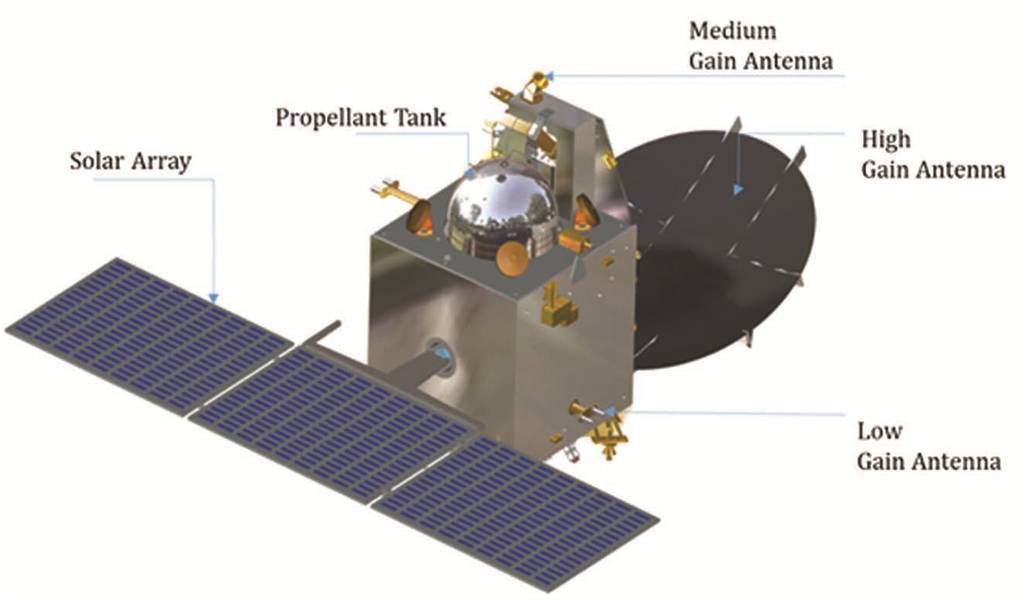CONTENTS
History
On 23 November 2008, the first public acknowledgement of an uncrewed mission to Mars was announced by then-ISRO chairman G. Madhavan Nair.The MOM mission concept began with a feasibility study in 2010 by the Indian Institute of Space Science and Technology after the launch of lunar satellite Chandrayaan-1 in 2008. Prime Minister Manmohan Singh approved the project on 3 August 2012, after the Indian Space Research Organisation completed ₹125 crore (US$18 million) of required studies for the orbiter. The total project cost may be up to ₹454 crore (US$64 million). The satellite costs ₹153 crore (US$21 million) and the rest of the budget has been attributed to ground stations and relay upgrades that will be used for other ISRO projects.
Team
Cost
The total cost of the mission was approximately ₹450 Crore (US$73 million), making it the least-expensive Mars mission to date. The low cost of the mission was ascribed by K. Radhakrishnan, the chairman of ISRO, to various factors, including a "modular approach", few ground tests and long (18–20 hour) working days for scientists.BBC's Jonathan Amos mentioned lower worker costs, home-grown technologies, simpler design, and a significantly less complicated payload than NASA's MAVEN.
Mission Objectives
The main objectives are to develop the technologies required for designing, planning, management and operations of an interplanetary mission comprising the following major tasks:
- Orbit manoeuvres to transfer the spacecraft from Earth-centred orbit to heliocentric trajectory and finally, capture into Martian orbit
- Development of force models and algorithms for orbit and attitude (orientation) computations and analysis
- Navigation in all phases
- Maintain the spacecraft in all phases of the mission
- Meeting power, communications, thermal and payload operation requirements
Scientific objectives
The scientific objectives deal with the following major aspects
- Exploration of Mars surface features by studying the morphology, topography and mineralogy
- Study the constituents of Martian atmosphere including methane and CO2 using remote sensing techniques
- Study the dynamics of the upper atmosphere of Mars, effects of solar wind and radiation and the escape of volatiles to outer space
Spacecraft Design
- Mass:The lift-off mass was 1,337.2 kg (2,948 lb), including 852 kg (1,878 lb) of propellant.
- Bus:The spacecraft's bus is a modified I-1 K structure and propulsion hardware configuration, similar to Chandrayaan-1, India's lunar orbiter that operated from 2008 to 2009, with specific improvements and upgrades needed for a Mars mission.The satellite structure is constructed of an aluminium and composite fibre reinforced plastic (CFRP) sandwich construction.
- Power:Electric power is generated by three solar array panels of 1.8 m × 1.4 m (5 ft 11 in × 4 ft 7 in) each (7.56 m2 (81.4 sq ft) total), for a maximum of 840 watts of power generation in Mars orbit. Electricity is stored in a 36 Ah Lithium-ion battery.
- PropulsionA liquid fuel engine with a thrust of 440 newtons (99 lbf) is used for orbit raising and insertion into Mars orbit. The orbiter also has eight 22-newton (4.9 lbf) thrusters for attitude control (orientation).Its propellant mass at launch was 852 kg (1,878 lb).
- Altitude and Orbit Control System:Maneuvering system that includes electronics with a MAR31750 processor, two star sensors, a solar panel Sun sensor, a coarse analog Sun sensor, four reaction wheels, and the primary propulsion system.
List of mission to Mars
| Mission | Country | Outcome |
|---|---|---|
| Mars 1 | Soviet Union | Failure |
| Mariner 3 | United States | Failure |
| Mars 96 | Russia | Failure |
| Mars Express | European Union | Successful |
| Mars Orbiter Mission | India | Successful |
Pictures

Artist's rendering of the Mars Orbiter Mission spacecraft, with Mars in the background.
See Picture
Mars Orbiter Mission is India's first interplanetary mission to planet Mars with an orbiter craft designed to orbit Mars in an elliptical orbit. It was successfully launched on 5th November 2013 by the Indian Space Research Organisation (ISRO).
See PictureVideo
Animated assembly of Mars Orbiter Mission spacecraft